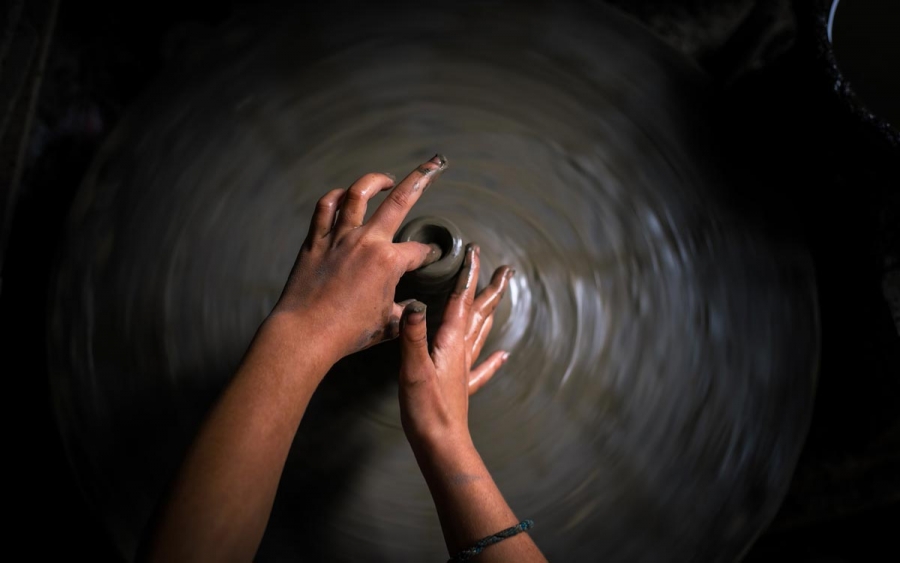This article looks at the intersecting concepts of function, form and fine-art in ceramics as a way of understanding the way makers approach their clay works.
On a fundamental level, ceramics are everyday utilitarian objects that have a function to perform – cups, tiles, plates, bowls or amphorae of various kinds.
For many makers, exploring a vessel’s functionality or fitness for purpose is a sufficient end goal and one that drives them in their clay work.
For others, it is the pureness of a ceramic form that drives them. The shape of a vessel perfected in line and proportion that is the magic. Alternatively, they may be fascinated by the interrelationships between various ceramic forms arranged in clusters or groups.
Some see ceramics as mostly an artistic medium, a vehicle for communication of their thoughts and ideas to a broader audience. They are artists who have chosen clay as their medium.
There are, of course, other ways of looking at ceramic arts and their makers:
- Wheel vs hand-building vs 3D clay printing as clay techniques
- A whole continuum of surface treatments – functional/decorative/illustration/pictorial
- Firing methods that range from industrial perfectionism to directed randomness
Each of these elements can form overlays to the function, form and fine-art aspects of ceramics. There are many other ways of looking at and categorising ceramic art, indeed, this is what makes ceramics such an exciting art form.
FUNCTION FORM & FINE ART
The role of function in the work of John James and Anna-Marie Wallace
The simplest definition of functional ceramics is that they are clay vessels designed for everyday use.
The success of these vessels depends mainly on how well it performs its function in domestic or commercial use. Functional ceramics includes every common form of ceramic ware from tiles to plates, vases to jugs, casseroles to planter boxes.
Functional ceramics can be beautiful in form and surface treatment as well as useful in day-to-day life.
The best examples of functional ceramics are a pleasure to hold and look at as well as useful — for instance, the many wonderful examples of table-ware produced by artists like John James and Anna-Marie Wallace.
John James
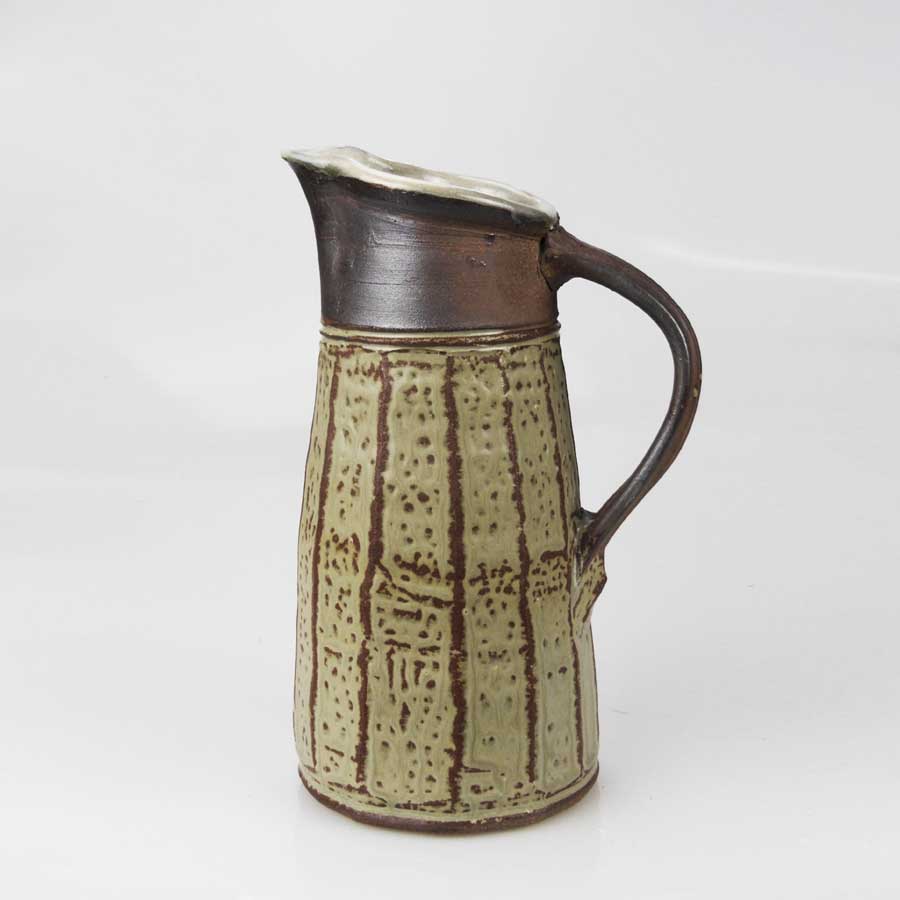
John James is a self-taught Queensland potter who specialises in traditional wood-fired functional ceramics.
“I enjoy using handmade pots,” says John, “You shuffle through the mugs in the cupboard to find the one that somehow makes your morning coffee nicer, or the bowl that makes your breakfast cereal taste better, these are the good pots, with the qualities you strive to achieve.”
For John, the process of making the pot is integral to his creative practice.
“My pots are thrown on kick wheels, glazed using a single firing process whereby the glaze is applied at leather hard. The glazes are entirely from rock dust, plant ashes, and the clays collected locally.
“Pots are then fired for 18 to 20 hours in a 100 cu ft woodfired kiln to 1300 centigrade. I am also making some of the throwing clays I use from local materials.”
Visit John James’ website:
Anna-Marie Wallace
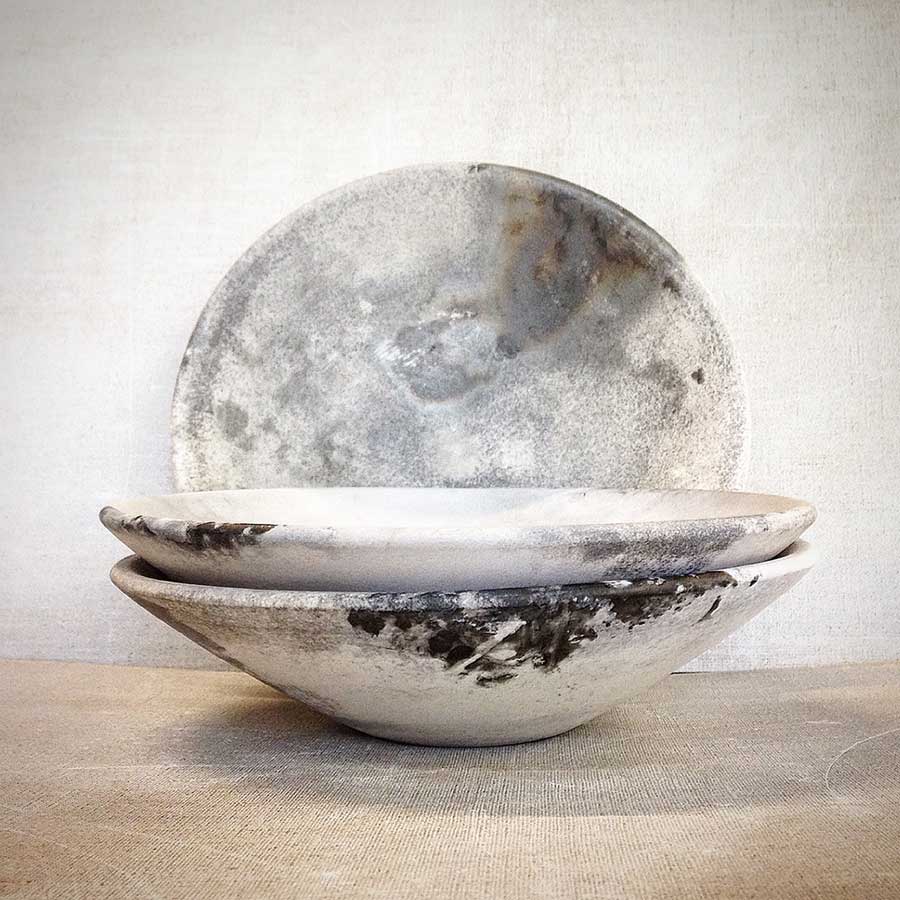
Anna-Marie Wallace makes commercial and domestic tableware and jewellery using a mixture of traditional and high technology processes.
Her unique work is electric fired to 1300°C, and then saggar fired to 600°C The surface decoration comes from natural combustible materials included in each saggar. These combustibles include native bark, timber, leaves, flowers and waste from native fauna, sustainably collected.
The inside of the saggars are starved of oxygen, the combustibles vaporise and deposit natural oxides and minerals that embed themselves deep into the clay surface, producing unique and exquisite patterns.
Anna-Marie says, “After being set on fire a few times, our pieces are given a jacuzzi & exfoliating back massage to apologise (i.e. scrubbed clean & sanded smooth to ensure they are free from any carbon residue & debris) then sealed with an invisible layer of Liquid Quartz (a product co-developed by Anna-Marie) to ensure stain resistance & food safety.”
Visit Anna-Marie’s website Made of Australia:
FUNCTION FORM & FINE ART
Form and the work of Tatsuya Tsutsui and Rowley Drysdale
When debating the how the common form of manufactured objects come about, Professor Ferdinand Alexander Porsche said:
“If you analyse the function of an object, its form often becomes obvious.”
Some boil that down to “form follows function”.
The form of a cup, for example, is derived from the need to drink a small quantity of hot liquid without spilling the contents or burning ones-self. What has evolved is a shape or form that satisfies these requirements, and also possesses some universally pleasing aesthetic, built up over the generations.
Similarly, for other functional items – plates, jugs, bowls, vases and so on, each has a use. Each has evolved a form that satisfies that use. For many potters, a vessel is not truly complete until it is used in daily life, fulfilling its designed function.
For others, there is a drive to perfect the form itself, simplifying it down to its essential purity of shape, design and proportions. For still others, extending the boundaries of the usual form becomes an all-encompassing drive, morphing traditional forms into unexpected or even playful ways.
For these ceramicists, using the vessel in day-to-day life is either not necessary, or not even the point. The point is the appreciation of the form as a perfected “cultural” object and one that has a value beyond its function.
Tatsuya Tsutsui
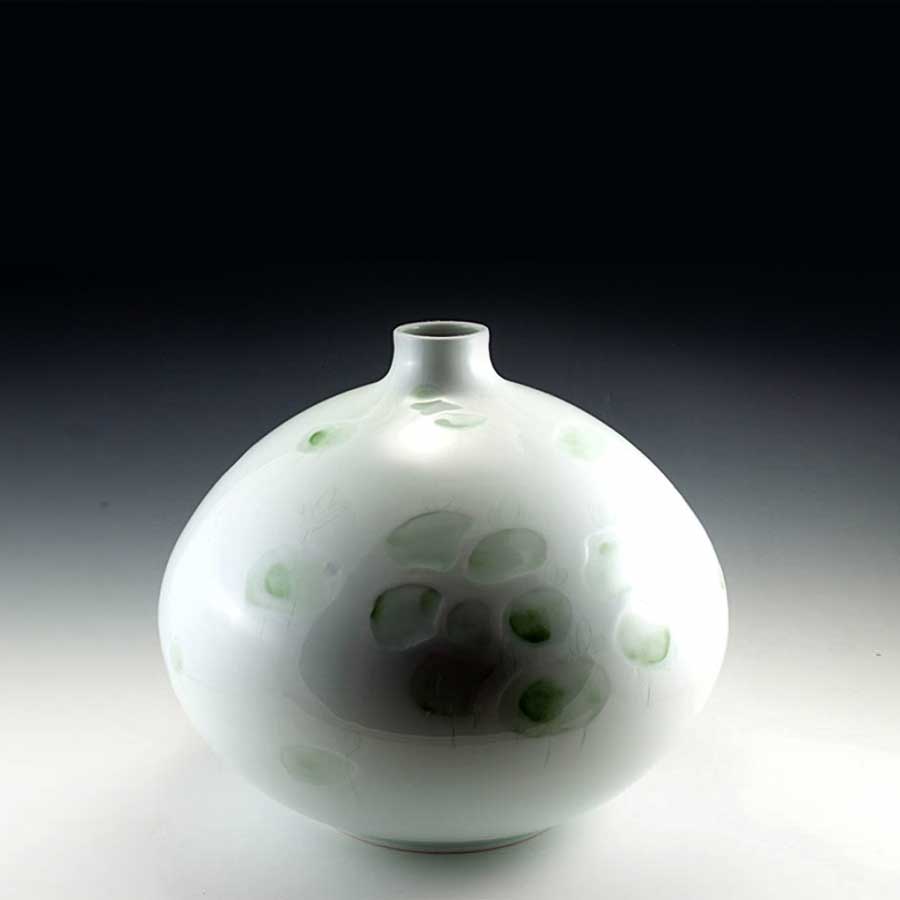
The work of Australian based Tatsuya Tsutsui illustrates this focus on form. In assessing some of Tatsuya’s competition work, judge Greg Daly said of Tatsuya’s work: “Quietly understated work that commands a presence. This is a confidently thrown vase with a glaze that glows.
“There is an understated etched surface with a hint of tones in green. When you look closely, you see traces of decoration as it disappears into the surface of the glaze.”
Rowley Drysdale

Cooroy based Rowley Drysdale creates “vessel oriented” ceramics, principally spheres that act as a blank canvas for his wood-fired glaze techniques. He says his style is typically Australian or “astringent” in his terms, where materials are stretched to the limit, and only the strongest and best survive the process.
“The blossom jars I make are often described as vases, and I think even that term is somewhat a stretch. The version of blossom jar I speak of is best described as a spherical vase with a small opening, usually without a neck.
“I was once told that these were made to hold one or three sprigs of cherry blossom only, and the intrinsic “Japanese-ness” of this appealed instantly and indelibly.”
Visit Rowley’s website at https://www.rowleydrysdaleart.com.au/
FUNCTION FORM & FINE ART
The fine art of Carol Forster and Andrew Bryant
When you look at a beautiful ceramic vessel, perfect in form, clever and sumptuous in surface decoration, an awkward question may arise in your mind. Am I looking at a beautiful object, or is this actually a work of fine art?
Craft or art – discerning the difference can be a vexing issue.
Some would argue that intention is everything. If the maker says that it is art, then it is art by definition. Is the response of the viewer the key? If the viewer says it is art, then is it art? Art can be about ideas and communicating these through an object – be it as a canvas, novel, works on paper, cinema, poems or ceramics.
Art expresses an opinion. Art shifts your perception of the world. Importantly, art talks about something that is beyond the object itself. It is not just about the quality of the vessel’s form, or about the technical brilliance of the glazes or the skill in decorating the surface. Art is about an idea communicated by the vessel.
Good art is about good ideas, communicated with power and emotion that can have a lasting impact on the viewer. Dumb ideas, badly communicated can still be art – it is just that they are bad art.
These two ceramicists produce works that are not at all functional, are not an exploration of traditional forms, but are all about exploring ideas and concepts through the medium of clay.
Carol Forster
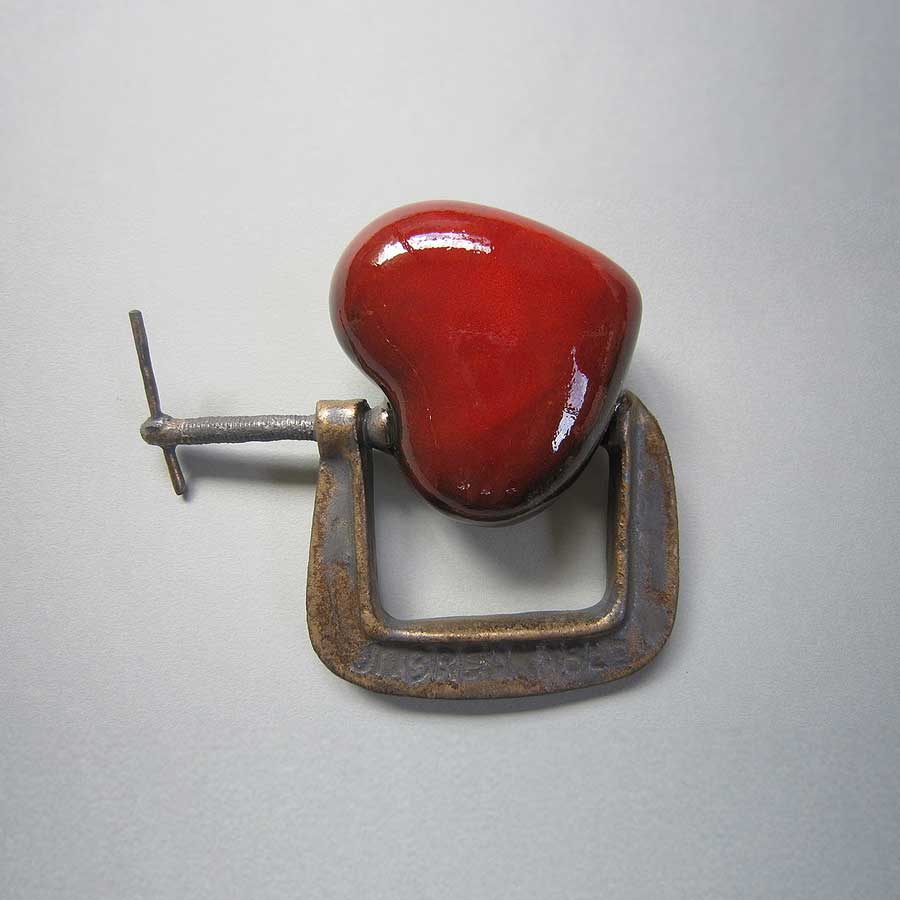
Art is not always deep and serious, often it uses humour and quirkiness to cut through. Sunshine Coast ceramicist Carol Forster produced a series called Matters of the Heart.
With Matter of the Heart Carol explores the everyday emotions we all face in our lives using a ceramic red heart as a universal symbol of love and vulnerability in a way that brings immediate joy and understanding of Carol’s perception of life.
Visit Carol’s website at https://carolforster.weebly.com/
Andrew Bryant
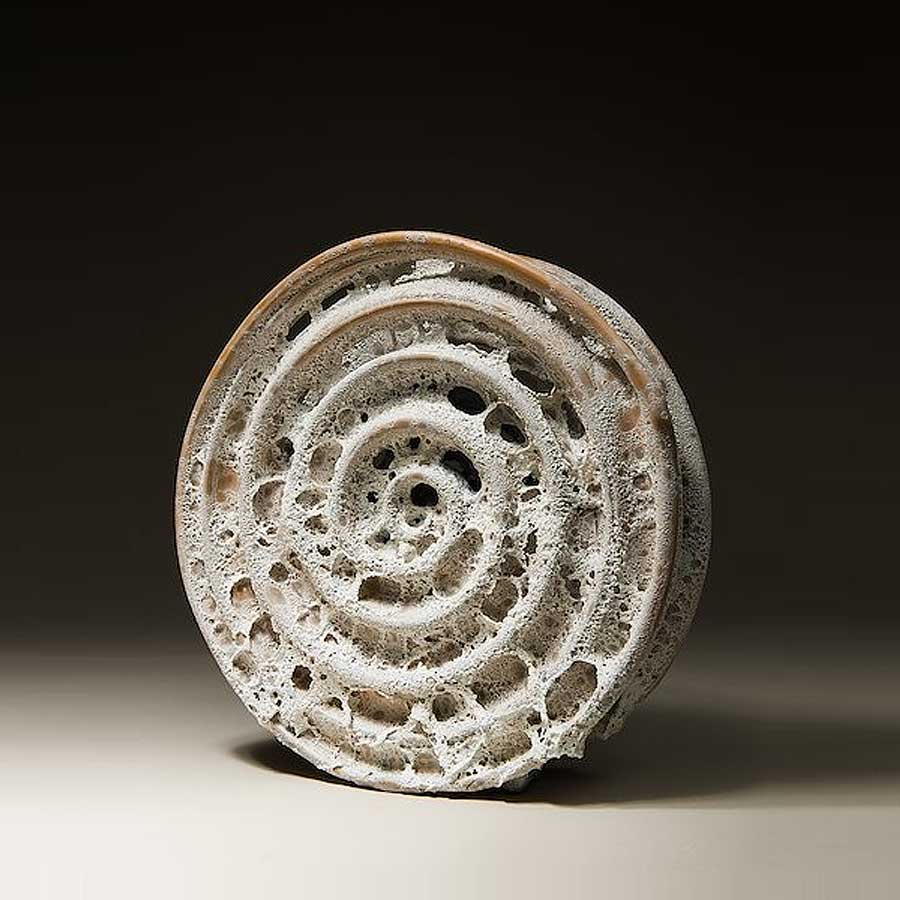
Andrew Bryant is a Sunshine Coast ceramicist whose work focuses on the effects of time on the shapes and structures that nature uses to build with, expressing this with glazing and firing techniques that inject variability that simulates the effect of time on natural objects.
Andrew has taught ceramics for twenty years and is currently an art lecturer at sunshine coast Institute of TAFE.
“My work explores the idea of inner anatomy within simple ceramic forms. I am interested in the traditional notion of the ceramic form being figurative and have applied a similar methodology used in figure drawing to break down the form to its core skeletal structure. ”
Visit Andrew’s website at:

